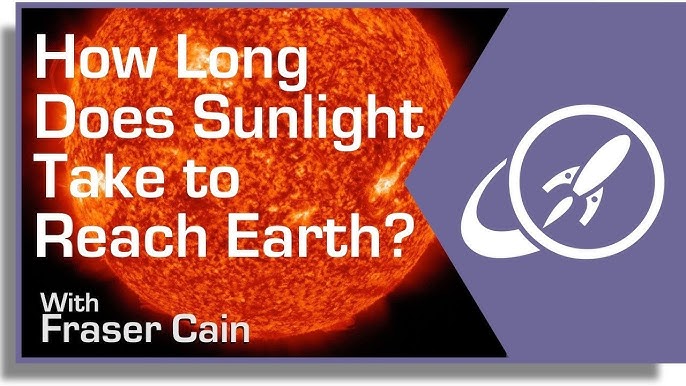How Long Does It Take for Sunlight to Reach Earth?
Sunlight is essential for life on Earth, providing the energy necessary for photosynthesis, regulating climate, and influencing weather patterns. One of the most fascinating aspects of sunlight is the time it takes for it to travel from the Sun to our planet. This article will explore the journey of sunlight, how long it takes to reach Earth, and the factors that influence this duration. We will also delve into the science behind light travel, the implications of this journey, and frequently asked questions.
The Journey of Sunlight
Speed of Light
Light travels at an incredible speed of approximately 299,792 kilometers per second (or about 186,282 miles per second). This speed is often rounded to 300,000 kilometers per second for simplicity in calculations.
Distance from the Sun to Earth
The average distance from the Sun to Earth is about 149.6 million kilometers (or 93 million miles). This distance can vary slightly due to the elliptical shape of Earth’s orbit around the Sun, ranging from approximately 147 million kilometers at its closest (perihelion) to about 152 million kilometers at its farthest (aphelion).
Calculating the Time
To calculate the time it takes for sunlight to reach Earth, we can use the formula:
Using the average distance:
This translates to approximately 8 minutes and 20 seconds. However, this is a simplified calculation that does not account for the complexities of light travel within the Sun.
The Complex Journey Within the Sun
While it takes about 8 minutes and 20 seconds for light to travel from the Sun’s surface to Earth, the journey of a photon of light actually begins deep within the Sun. Photons are created in the Sun’s core through nuclear fusion, where hydrogen atoms combine to form helium, releasing energy in the form of gamma rays.
The Random Walk
Once a photon is created in the core, it undergoes a process known as “radiative diffusion.” This process involves the photon being absorbed and re-emitted countless times as it travels through the dense plasma of the Sun. The average time it takes for a photon to reach the surface of the Sun can range from 10,000 to 170,000 years due to this random walk.
| Phase of Journey | Duration |
|---|---|
| Core to Surface | 10,000 to 170,000 years |
| Surface to Earth | 8 minutes and 20 seconds |
Implications of the Journey
The long journey of photons within the Sun highlights the complex processes that occur in stellar environments. It also emphasizes the vastness of time when considering the universe. When we observe sunlight, we are not only witnessing the light that has traveled through space but also light that has been on a journey for thousands of years.
Factors Influencing Sunlight Travel Time
While the average time for sunlight to reach Earth is well established, several factors can influence this duration:
- Orbital Variations: As mentioned, the Earth’s orbit is elliptical, meaning the distance from the Sun changes throughout the year. This can cause slight variations in the time it takes for sunlight to reach Earth, ranging from approximately 8 minutes and 10 seconds to 8 minutes and 27 seconds.
- Solar Activity: Solar flares and coronal mass ejections can affect the propagation of light and other electromagnetic radiation from the Sun. However, these effects are minimal concerning the overall travel time of sunlight.
- Atmospheric Interference: While sunlight travels through the vacuum of space at a constant speed, its passage through Earth’s atmosphere can cause refraction and scattering, slightly altering the perceived speed of light as it reaches the surface. However, this does not significantly change the travel time.
The Importance of Sunlight
Sunlight plays a crucial role in sustaining life on Earth. Here are some of its key benefits:
Photosynthesis
Plants use sunlight to convert carbon dioxide and water into glucose and oxygen through photosynthesis. This process is fundamental for plant growth and the production of oxygen, which is essential for most life forms on Earth.
Climate Regulation
Sunlight influences weather patterns and climate. The distribution of solar energy affects temperature, precipitation, and atmospheric circulation, which in turn impacts ecosystems and human activities.
Vitamin D Production
Sunlight is a natural source of vitamin D, which is essential for bone health and immune function. Exposure to sunlight helps the body synthesize this crucial vitamin.
Psychological Well-being
Exposure to sunlight has been linked to improved mood and mental health. Sunlight can increase the production of serotonin, a neurotransmitter that contributes to feelings of happiness and well-being.
Conclusion
The journey of sunlight from the Sun to Earth is a remarkable process that involves both immediate travel and a lengthy history within the Sun itself. While it takes about 8 minutes and 20 seconds for sunlight to reach us, the photons we see have often been on a journey spanning thousands of years. Understanding this journey enhances our appreciation for the Sun’s role in sustaining life and shaping our environment.
FAQ Section
How long does it take for sunlight to reach Earth?
On average, it takes sunlight approximately 8 minutes and 20 seconds to travel from the Sun to Earth.
Why does sunlight take so long to reach Earth?
While the travel time from the Sun’s surface to Earth is about 8 minutes and 20 seconds, photons take thousands to hundreds of thousands of years to travel from the Sun’s core to its surface due to the random walk process.
What factors can affect the time it takes for sunlight to reach Earth?
Factors include the elliptical shape of Earth’s orbit, solar activity, and atmospheric interference. However, these factors only cause slight variations in the overall travel time.
How far is the Earth from the Sun?
The average distance from the Earth to the Sun is about 149.6 million kilometers (or 93 million miles).
What is the speed of light?
The speed of light is approximately 299,792 kilometers per second (or about 186,282 miles per second).
Where can I find more information about sunlight and its effects?
For more detailed information about sunlight and its effects, you can visit the Wikipedia page on the Sun.Wikipedia Link: Sun



